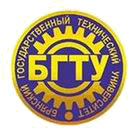ГРНТИ 50.07 Теоретические основы вычислительной техники
ББК 3297 Вычислительная техника
Рендеринг больших трёхмерных сцен с убедительным уровнем реализма является серьёзной проблемой компьютерной графики. Одним из распространённых подходов к решению этой проблемы является использование различных уровней детализации (LOD) для объектов сцены в зависимости от их удалённости от наблюдателя. Более эффективным для больших сцен является поход с иерархическими уровнями детализации (HLOD), когда уровни детализации создаются не для каждого объекта индивидуально, а сразу для больших групп объектов. Однако данный метод сталкивается с трудностями, когда в сцене происходят изменения. В данной работе рассматривается класс сцен с детерминированным характером событий и приводится метод для их эффективного рендеринга, основанный на использовании иерархических динамических уровней детализации (HDLOD). Описываются алгоритмы генерации HDLOD и их применение при визуализации сцен.
рендеринг, динамические сцены, полигональные модели, уровни детализации
1. Cesium 3D Tiles. Beyond 2D Tiling. 2016. https://cesium.com/presentations/files/FOSS4GNA2016/3 DTiles.pdf
2. Erikson, C. et al., 2001. HLODs for Faster Display of Large Static and Dynamic Environments. I3D '01 Proceedings of the 2001 symposium on Interactive 3D graphics. New York, USA, pp. 111-120.
3. Garland, M. and Heckbert, P.S., 1997. Surface simplification using quadric error metrics. SIGGRAPH '97 Proceedings of the 24th annual conference on Computer graphics and interactive techniques. New York, USA, pp. 209-216.
4. Guéziec, A., 1995. Surface Simplification With Variable Tolerance. 2nd Annual International Symposium on Medical Robotics and Computer Assisted Surgery, Baltimore, USA, pp. 132-139.
5. Hoppe, H., 1996. Progressive Meshes. SIGGRAPH '96 Proceedings of the 23rd annual conference on Computer graphics and interactive techniques. New York, USA, pp. 99-108.
6. Morozov, S. et al, 2018. Indexing of Hierarchically Organized Spatial-Temporal Data Using Dynamic Regular Octrees. Petrenko A., Voronkov A. (eds) Perspectives of System Informatics. PSI 2017. Lecture Notes in Computer Science, vol 10742, pp. 276-290.
7. Ronfard, R. and Rossignac, J., 1996. Full-range approximation of triangulated polyhedra. Computer Graphics Forum, Vol. 15, No. 3, pp. 67-76.
8. Rossignac J. and Borrel P., 1993. Multi-resolution 3D approximations for rendering complex scenes. Falcidieno B., Kunii T.L. (eds) Modeling in Computer Graphics. IFIP Series on Computer Graphics. Springer, Berlin, Heidelberg, Germany.
9. Rudomin, I. et al, 2014. Hierarchical level of detail for varied animated crowds. Visual Computer Vol. 30(6-8), pp. 949-961.
10. Samet, H., 2006. Foundations of Multidimensional and Metric Data Structures. Morgan Kaufmann, Burlington, USA.
11. Schroeder, W.J. et al., 1992. Decimation of Triangle Meshes. SIGGRAPH '92 Proceedings of the 19th annual conference on Computer graphics and interactive techniques. New York, USA, pp. 65-70.
12. Soucy, M. and Laurendeau, D., 1996. Multiresolution Surface Modeling Based on Hierarchical Triangulation. Computer Vision and Image Understanding, Vol. 63, No. 1, pp. 1-14.
13. Xu, D. and Tian, Y., 2015. A Comprehensive Survey of Clustering Algorithms. Annals of Data Science, Vol. 2, pp. 165-193.





